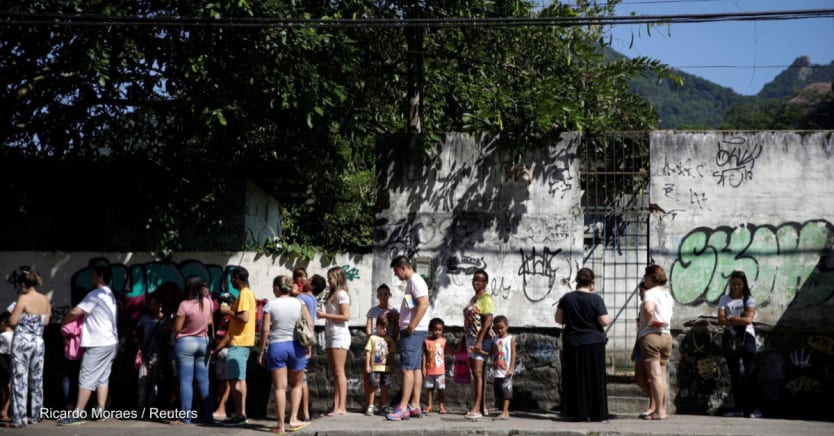
It might be a bit counterintuitive — linking drought to a yellow fever outbreak, said Joelle Ivy Rosser, infectious disease postdoctoral fellow at Stanford University.
Sign up for Devex CheckUp
The must-read weekly newsletter for exclusive global health news and insider insights.
“You don't think of drought as causing a mosquito-borne infection to increase,” she said. “With these infections — like yellow fever, dengue, or Zika — you tend to see the outbreaks when the rainy season starts because that's when the mosquitoes proliferate.”
But Rosser and her team recently presented research at the American Society of Tropical Medicine and Hygiene that suggests this surprising link could exist.
An unusual outbreak of yellow fever erupted between 2017 and 2018 in southeastern Brazil in urban areas, such as São Paulo and Rio de Janeiro. More than 2,000 cases were reported. While the disease routinely circulates in the Amazon, with occasional human infections — an outbreak had not hit an urban center in 80 years. This unusual outbreak raised a lot of questions.
The region also experienced drought at the time of the outbreak. This prompted Rosser and her team to research if drought sparked the outbreak. They began mapping out the cases, tracing the epidemic to where it originated — coupling it with data on the severity of the drought across the region. They found the parameters of where the outbreak occurred lined up with the locations experiencing severe drought — with the most severe points of the drought found in the state where the epidemic originated.
The outbreak was driven by forest mosquitoes, called Haemagogus mosquitoes, which can fly long distances. Rosser’s team hypothesizes that the mosquitoes, during the drought, flew long distances in search of water and food and they landed in parts of the forest near the edge of urban areas.
There they found the howler monkeys, which they bit and became infected with the disease. These monkeys are well adapted to live on the borders of cities and forests and are particularly susceptible to yellow fever. Other mosquitoes then bite the infected monkeys, becoming infected themselves, and the number of infected mosquitoes builds up to a critical mass. These infected mosquitoes can also bite humans.
“The way epidemics really get going is when you have enough transmission happening. Otherwise, if you get like one or two, it can just die out,” Rosser said.
“Drought could actually push the mosquitoes and the monkeys into closer contact with each other … right by that boundary between the forest and the cities,” she added.
She said that when mosquitoes are dehydrated, they can increase their biting rate.
Rosser examined which people were infected first in the outbreak and found that people with more rural or outdoor exposure were at higher risk for getting yellow fever.
“We're gonna need to be ready for those unexpected things and start trying to think more broadly about ways that climate change could affect disease transmission.”
— Joelle Ivy Rosser, infectious disease postdoctoral fellow, Stanford University“That suggests that earliest transmission was happening at that border of the forest and city,” she said.
The type of mosquito most commonly found in urban settings in Brazil is Aedes aegypti. They're the ones that typically spread diseases such as dengue, chikungunya, and Zika — but they don’t fly long distances, unlike forest mosquitoes. When yellow fever was rampant in South America in the early 1900s and before, it was through the Aedes aegypti mosquitoes.
During the outbreak in 2017 and 2018, there was concern that said mosquito species was the culprit behind the spread. If that were the case, the outbreaks could have escalated to much higher rates of infection.
“Those mosquitoes are the biggest pests in cities because they are highly adapted to urban environments. You get so much more contact between those mosquitoes and humans than you do with forest mosquitoes and humans. You could imagine just massive outbreaks even bigger than what this one was,” she said.
As climate change fuels extreme weather globally, including drought, disruptions to ecosystems might lead to disease transmission in unexpected ways.
“The ecosystem is really complex … we're gonna need to be ready for those unexpected things and start trying to think more broadly about ways that climate change could affect disease transmission,” she said.
And on the public health front, Rosser said this could include reassessing where yellow fever vaccinations are recommended.

